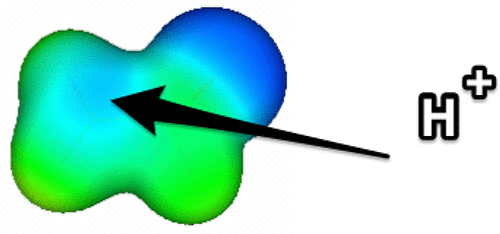当前位置:
X-MOL 学术
›
J. Phys. Chem. A
›
论文详情
Our official English website, www.x-mol.net, welcomes your feedback! (Note: you will need to create a separate account there.)
The Role of the Density Response Kernel in the Protonation Process.
The Journal of Physical Chemistry A ( IF 2.9 ) Pub Date : 2020-01-23 , DOI: 10.1021/acs.jpca.9b07478 Andrés Cedillo 1
The Journal of Physical Chemistry A ( IF 2.9 ) Pub Date : 2020-01-23 , DOI: 10.1021/acs.jpca.9b07478 Andrés Cedillo 1
Affiliation

|
The interaction between a Lewis base and a proton produces large changes in the electron distribution of the proton-accepting species. The quantum description of the change in the electronic properties can be predicted by perturbative models. Density functional theory-based reactivity indices are useful quantities to predict the changes in the energy and the electron density of electronic systems. However, the perturbation produced by the proton, namely, the electric field of a bare nucleus, usually leads to the use of perturbative terms beyond the first order. In this work, we analyze the effect of the protonation on the electronic structure of different Lewis bases. We also identify the leading term in the perturbative expansion that determines the protonation site and try to relate it with the chemical nature of the Lewis base. Even when the interaction is initially dominated by the electrostatic forces, we found that the electron redistribution effects can play a more relevant role for highly polarizable species.
中文翻译:

密度反应核在质子化过程中的作用。
路易斯碱与质子之间的相互作用在质子接受物质的电子分布中产生了很大的变化。电子性质变化的量子描述可以通过微扰模型预测。基于密度泛函理论的反应指数对于预测电子系统的能量和电子密度的变化非常有用。但是,质子产生的扰动,即裸核的电场,通常会导致使用超出一阶的扰动项。在这项工作中,我们分析了质子化对不同路易斯碱电子结构的影响。我们还确定了扰动扩展中的主导术语,该术语决定了质子化位点,并尝试将其与路易斯碱的化学性质相关联。
更新日期:2020-01-23
中文翻译:

密度反应核在质子化过程中的作用。
路易斯碱与质子之间的相互作用在质子接受物质的电子分布中产生了很大的变化。电子性质变化的量子描述可以通过微扰模型预测。基于密度泛函理论的反应指数对于预测电子系统的能量和电子密度的变化非常有用。但是,质子产生的扰动,即裸核的电场,通常会导致使用超出一阶的扰动项。在这项工作中,我们分析了质子化对不同路易斯碱电子结构的影响。我们还确定了扰动扩展中的主导术语,该术语决定了质子化位点,并尝试将其与路易斯碱的化学性质相关联。


























 京公网安备 11010802027423号
京公网安备 11010802027423号